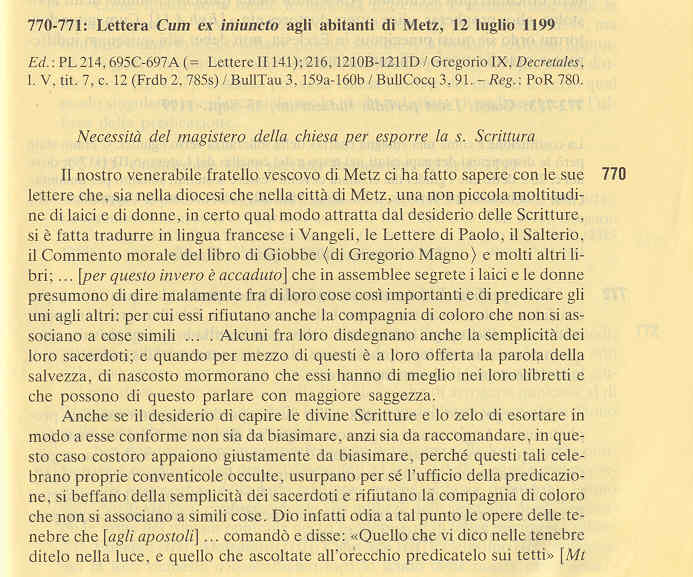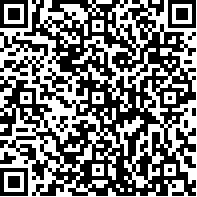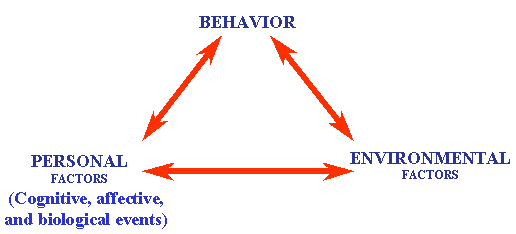NZQA REGISTERED UNIT STANDARD 29773 VERSION 1 PAGE 4
(REGISTERED UNDER THE SOCIETIES REGISTRATION ACT 1860) FEDERATION HOUSE2 ARGENTINA LIST OF REGISTERED BARLEY ELEVATORS TO
28012021_registered_applications
64B94010 STANDARDS FOR PROTOCOLS (1) AN ADVANCED REGISTERED NURSE
ACCOUNTS APPLICATION FORM 1 TRADING NAME REGISTERED NAME
ADDRESS WHERE YOU ARE REGISTERED TO VOTE POSTAL VOTE
29773 Produce digital images for a range of digital media
|
NZQA registered unit standard |
29773 version 1 |
|
|
Page |
|
Title |
Produce digital images for a range of digital media |
||
|
Level |
2 |
Credits |
3 |
|
Purpose |
People credited with this unit standard are able to: source and download selected images; edit images; and use digital drawing tools to create a vector graphic image, to meet the given requirements.
This unit standard has been developed primarily for assessment as an option within programmes leading to the New Zealand Certificate in Computing (User Fundamentals) (Level 2) [Ref: 2591]. |
|
Classification |
Computing > Generic Computing |
|
Available grade |
Achieved |
Explanatory notes
1 Assessment, where applicable, will be conducted in and for the context of a real or realistic situation and/or setting, and be relevant to current and/or emerging practice. The assessor may gather evidence over time from a range of scenarios rather than using one assessment where the learner has to demonstrate all of the required skills.
2 The requirements for the images will be supplied to the learner, and will include audience, topic and the final specifications. Final specifications include but are not limited to – resolution, size, colour mode, file size, file format. The source may be provided by the assessor or by the learner. Sources must be acknowledged, and consideration must be given to creative commons and copyright.
3 Definitions
Copyright refers to the exclusive legal right given to a creator to control the reproduction of their work.
Creative Commons (CC) refers to collaborative global commons, the public domain free legal tools for the sharing and use of creativity and knowledge, which work alongside copyright.
Images refer to raster, bitmap or vector graphics.
Vector graphic image is the use of geometrical elements such as points, lines, curves, shapes and polygons to represent images in computer graphics.
4 Legislation relevant to this unit standard may include but is not limited to the:
Copyright Act 1994
Copyright (New Technologies) Amendment Act 2008
Defamation Act 1992
Films, Videos, and Publications Classification Act 1993
Harmful Digital Communications Act 2015
Health and Safety at Work Act 2015
Privacy Act 1993
Telecommunications Act 2001
Unsolicited Electronic Messages Act 2007
and any subsequent amendments.
Current legislation and regulations can be accessed at http://legislation.govt.nz.
5 References
ACC5637 Guidelines for Using Computers - Preventing and managing discomfort, pain and injury. Accident Compensation Corporation - Department of Labour, 2010; available from Worksafe New Zealand, at http://www.business.govt.nz/worksafe/information-guidance/all-guidance-items/guidelines-for-using-computers.
Outcomes and evidence requirements
Outcome 1
Source and download selected images to meet the given requirements.
Range a minimum of six images for a range of media, each with different resolution and size requirements;
media includes but is not limited to – website, digital print, offset print.
Evidence requirements
1.1 Images are identified to suit the given requirements.
1.2 Images are sourced from the input devices available.
Range evidence is required from two devices that may include but are not limited to – scanner, digital camera, internet, photo disc, computer, portable input device.
1.3 Images are downloaded, opened and prepared for adjustment/editing, retaining original integrity.
Range original integrity includes images not being distorted; appropriate resolution for the intended output.
1.4 Images are used according to applicable legal, ethical and moral considerations.
Range includes but is not limited to – creative commons, copyright, attribution, licencing; privacy; appropriateness to situation.
Outcome 2
Edit images to meet the given requirements.
Range a minimum of six images for a range of media, each with different resolution and size requirements;
media includes but is not limited to – website, digital print, offset print.
Evidence requirements
2.1 Images are adjusted to meet the given requirements.
Range includes – resolution, size, colour mode, file size, format;
includes but is not limited to a minimum of two from – brightness, contrast, tonal range, composition, red-eye removal, colour, brush tools, pixel selects, layers, flattening images, text.
2.2 Adjusted images are saved and named in a format appropriate to the given requirements.
Range saved includes but is not limited to – file types; ready for exporting and use in other media and applications.
Outcome 3
Use digital drawing tools to create a vector graphic image to meet the given requirements.
Evidence requirements
3.1 Vector graphic image is created, optimised and saved to meet requirements.
Range includes but is not limited to – standard and transparent background; image size; file types ready for exporting and use in other media and applications.
3.2 Graphic is imported successfully into another application, and checked to ensure it displays as intended.
|
Replacement information |
This unit standard replaced unit standard 26745. |
|
Planned review date |
31 December 2021 |
Status information and last date for assessment for superseded versions
|
Process |
Version |
Date |
Last Date for Assessment |
|
Registration |
1 |
19 January 2017 |
N/A |
|
Consent and Moderation Requirements (CMR) reference |
0226 |
This CMR can be accessed at http://www.nzqa.govt.nz/framework/search/index.do.
Please note
Providers must be granted consent to assess against standards (accredited) by NZQA, before they can report credits from assessment against unit standards or deliver courses of study leading to that assessment.
Industry Training Organisations must be granted consent to assess against standards by NZQA before they can register credits from assessment against unit standards.
Providers and Industry Training Organisations, which have been granted consent and which are assessing against unit standards must engage with the moderation system that applies to those standards.
Requirements for consent to assess and an outline of the moderation system that applies to this standard are outlined in the Consent and Moderation Requirements (CMR). The CMR also includes useful information about special requirements for organisations wishing to develop education and training programmes, such as minimum qualifications for tutors and assessors, and special resource requirements.
Comments on this unit standard
Please contact NZQA National Qualifications Services [email protected] if you wish to suggest changes to the content of this unit standard.
|
NZQA National Qualifications Services SSB Code 130301 |
Ó
New Zealand Qualifications Authority |
all new Cars Registered From 1 July 2008 Will
ALL QUALIFICATIONS AND PART QUALIFICATIONS REGISTERED ON THE NATIONAL
ANNUAL REQUIREMENTS FOR RENEWAL PEZA – REGISTERED SERVICE ENTERPRISES
Tags: 29773 version, version, standard, registered, 29773
- 022011 SUPP(CRI3) SUPERVISOR STANDARD AND DECLARATION FORM USE
- CURRICULUM VITAE INGENIERO MÉCANICO INDUSTRIAL NOÉ MISAEL
- PRJ – 11JUL16 KSZBCSS WEBSERVICES OMGEVINGEN INDEX
- MATERIAL MASTER NUMBER REQUEST FORM INSTRUCTIONS PRIOR TO REQUESTING
- INTRODUCCIÓN A LA EMPRESA PROGRAMA DE LA SEGUNDA
- OKVIRNA PITANJA ZA II KOLOKVIJUM IZ NASLEDNOG PRAVA 1
- AUTOLIQUIDACIÓN IMPUESTO SOBRE CONSTRUCCIONES INSTALACIONES Y OBRAS TASA POR
- XTREME SPORTS WARM UP XSPORTS PARACHUTING FROM BUILDINGS
- RASCALS CLUB STAFF BEHAVIOUR POLICY RASCALS EXPECTS
- 817 NORMAS DE CONFLICTO MATRIMONIALES DEL ART 92 DEL
- FINANCIAL COMPLIANCE DECLARATION I XXX (NAME) MADE THIS APPLICATION
- KLASA 03001150302 URBROJ 4260201157 ZAGREB 25052015 SVIM GOSPODARSKIM
- LATEST FREE EBOOKS SACA AL ESCRITOR QUE LLEVAS
- BRAIN INJURY PRIMER A FREE ONLINE COURSE AVAILABLE THROUGH
- CURRICULUM VITAE ETAT CIVIL PRÉNOM ALHOUSSEYNOU MOCTAR NOM
- CONTRACT LABOUR (REGULATION & ABOLITION) CENTRAL RULES FORM XXII
- ỦY BAN NHÂN DÂN TỈNH BẮC NINH SỐ 3027UBNDKGVX
- 380000 ЭКОНОМИКА НАЗВАНИЕ ИЗДАНИЯ АВТОР ИЗДАТЕЛЬСТВО ГОД ИЗДАНИЯ ОПТОВАЯ
- 2421 PENSAMIENTO NUMÉRICO Y SISTEMAS NUMÉRICOS EN LA MAYOR
- R ELACIÓN DE PÁGINAS WEB DEDICADAS A LA BÚSQUEDA
- ANTRAGSFORMULAR LAND BRANDENBURG A N T R A
- EVIDENČNÍ ČÍSLO ŽADATELE PŘIHLÁŠKA KE ZDOKONALOVÁNÍ ODBORNÉ ZPŮSOBILOSTI ŘIDIČŮ
- GÉZA KÁLLAY MEDIEVAL AND RENAISSANCE DRAMA I
- REGENTS EXAM QUESTIONS ACEDA1 EXPONENTIAL GROWTH PAGE 7 WWWJMAPORG
- VANDERBILT STUDENT VOLUNTEERS FOR SCIENCE HTTPSTUDENTORGSVANDERBILTEDUVSVS ELECTRICAL CONDUCTIVITY SPRING
- KÉRELEM A SZELLEMI KULTURÁLIS ÖRÖKSÉG MAGYARORSZÁGI LOGOJÁNAK HASZNÁLATÁRA A
- CURRICULUM VITAE PERSONAL INFORMATION ADMIR JUKAN + 387 62191222
- UNIVERSIDADE ESTADUAL DA PARAÍBA REITORIA COORDENADORIA DE RELAÇÕES INTERNACIONAIS
- WYPADKI DROGOWE I ICH SKUTKI W LATACH 1975 –
- CURRICULUM VITAE – MARÍA CECILIA CÁBANA CURRICULUM VITAE MARÍA
ZAŁĄCZNIK DO UCHWAŁY NR 1102021 NACZELNEJ RADY ADWOKACKIEJ Z
 OKAN ÜNİVERSİTESİ İKTİSADİ VE İDARİ BİLİMLER FAKÜLTESİ ZORUNLU STAJ
OKAN ÜNİVERSİTESİ İKTİSADİ VE İDARİ BİLİMLER FAKÜLTESİ ZORUNLU STAJ NOM AUTEUR BESSAZ PAGE 2 SUR 14 TITRE
NOM AUTEUR BESSAZ PAGE 2 SUR 14 TITRE26 ARALIK 2014 CUMA RESMÎ GAZETE SAYI 29217
 ZAŁĄCZNIK NR 1 DO ZAPROSZENIA DO SKŁADANIA OFERT SZKOLENIOWYCH
ZAŁĄCZNIK NR 1 DO ZAPROSZENIA DO SKŁADANIA OFERT SZKOLENIOWYCH!doctype Html html Dirltr Langtrtr head meta Charsetutf8 link
RZP ZPSR0214PN ZAŁĄCZNIK NR 1 DO OFERTY KALKULACJA CENOWA
 6TO COLOQUIO GEOGRÁFICO SOBRE AMÉRICA LATINA LAS NUEVAS CONFIGURACIONES
6TO COLOQUIO GEOGRÁFICO SOBRE AMÉRICA LATINA LAS NUEVAS CONFIGURACIONESMODELO DE PLIEGO DE LOS PROCEDIMIENTOS DE CONTRATACIÓN DE
 HALEY JONES – MATH LESSON PLANS –AUGUST 28
HALEY JONES – MATH LESSON PLANS –AUGUST 28  TABLA II DISTRIBUCIÓN DE POISSON R 0 1 2
TABLA II DISTRIBUCIÓN DE POISSON R 0 1 2ECOSYSTEM CONSERVATION AND MANAGEMENT A REVIEW OF THE
MDEABE CONTACT HOUR POLICY POLICY DEVELOPMENT DATE 42501 POLICY
 7 “MANEJO DE LAS DISCREPANCIAS EN LA LONGITUD DEL
7 “MANEJO DE LAS DISCREPANCIAS EN LA LONGITUD DELPERATURAN PRESIDEN REPUBLIK INDONESIA NOMOR 1 TAHUN 2004
 LA VERA BIBBIA E I LIBRI DEUTEROCANONICI IL DIBATTITO
LA VERA BIBBIA E I LIBRI DEUTEROCANONICI IL DIBATTITO 4 HEALTH EDUCATION 3 SAFE DRINKING WATER METHOD
4 HEALTH EDUCATION 3 SAFE DRINKING WATER METHOD  PROCEDURE DINSCRIPTION UE LV2 – SEMESTRE 2 QUELLES
PROCEDURE DINSCRIPTION UE LV2 – SEMESTRE 2 QUELLES ARBEJDSBETINGET STRESS OG TILBAGEVENDEN TIL ARBEJDE SUSANNE ROSENKVIST AFGANGSMODUL
ARBEJDSBETINGET STRESS OG TILBAGEVENDEN TIL ARBEJDE SUSANNE ROSENKVIST AFGANGSMODULNORMA OFICIAL MEXICANA NOMCCAT006ECOL1993 QUE ESTABLECE LOS NIVELES MÁXIMOS